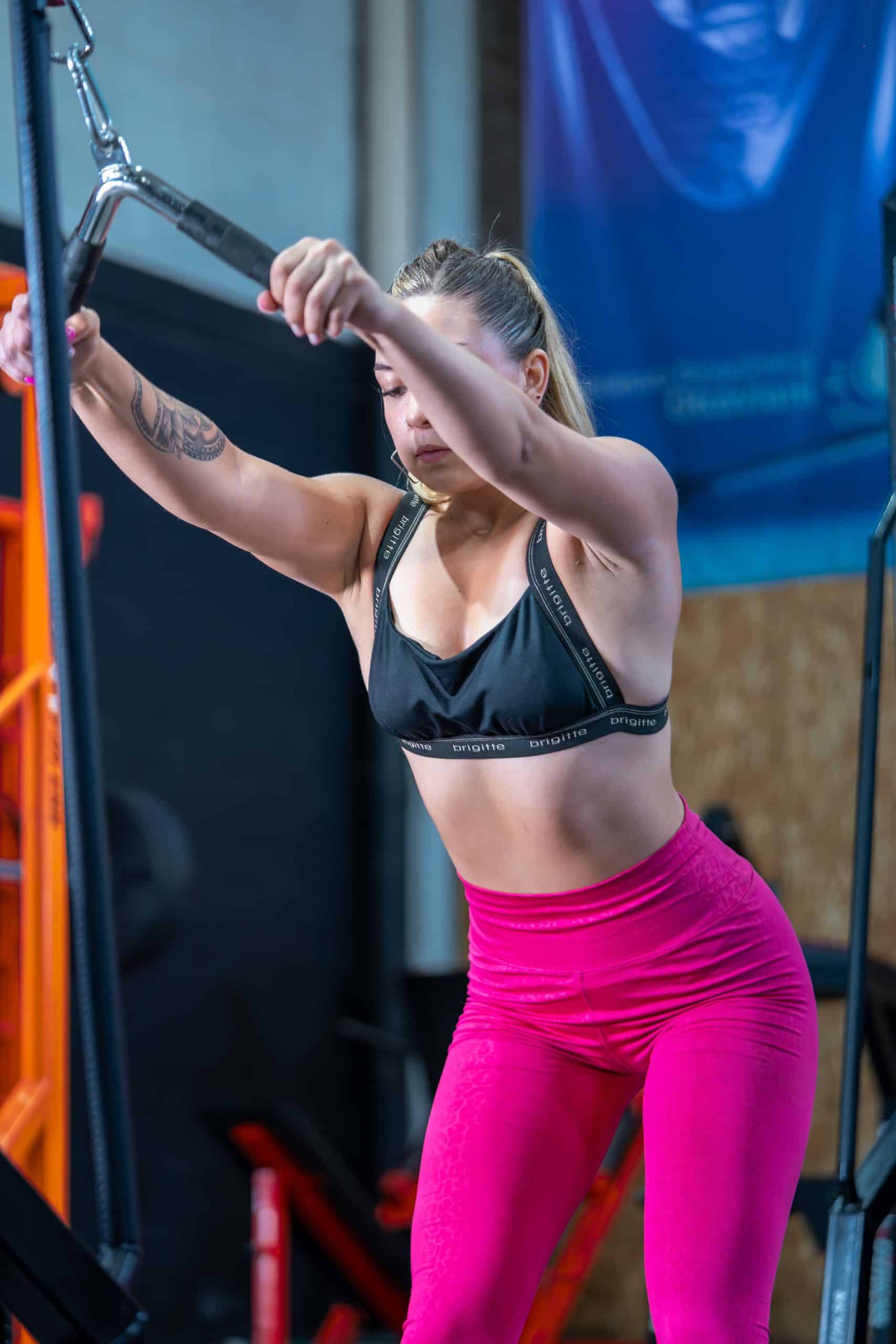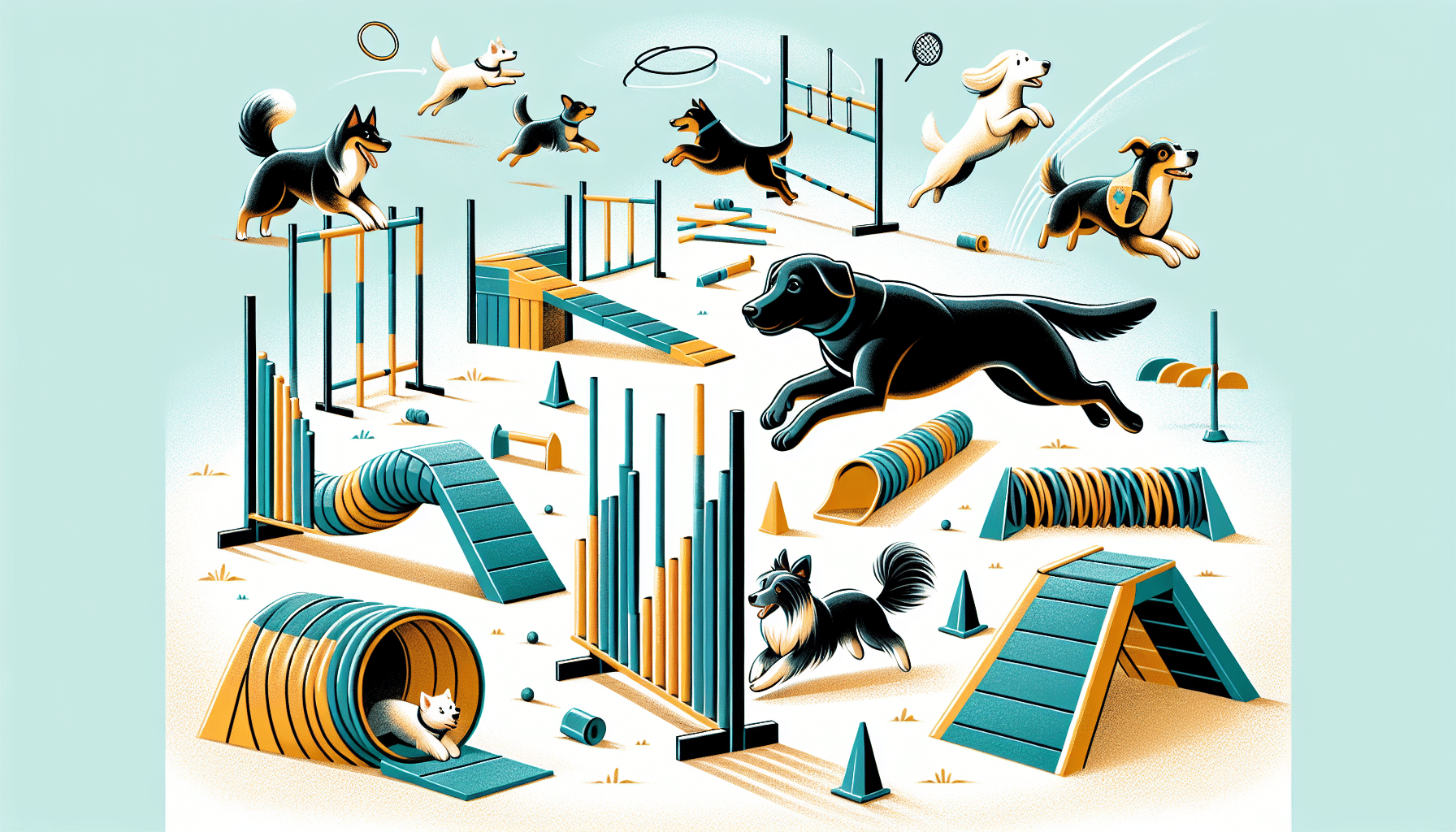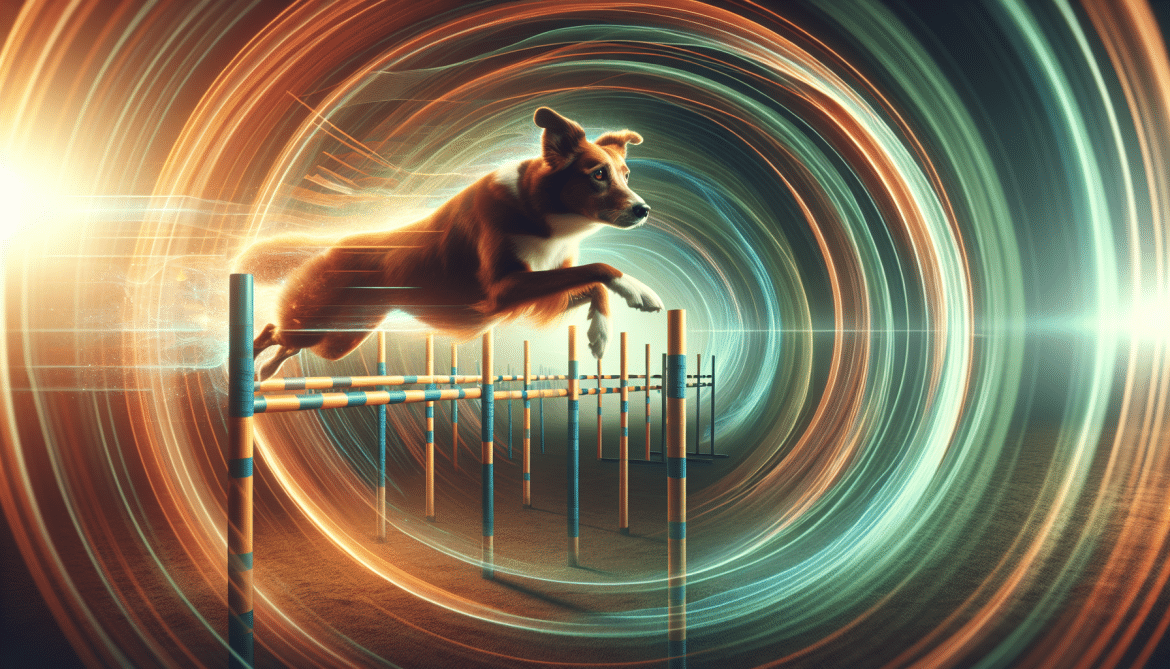If you've ever watched dogs gracefully navigating obstacle courses, jumping through hoops and weaving through poles, you may have wondered how they learned such impressive skills. The answer lies in agility training, a fun and stimulating activity that can bring immense benefits to both you and your furry friend. In this article, we'll guide you through the basics of getting started with agility training for dogs, from understanding the benefits to setting up your own backyard course. So grab your pup's favorite treats and get ready for an exciting journey of bonding and adventure through agility training!
What is Agility Training?
Agility training is a popular and dynamic form of dog sport that involves navigating a series of obstacles in a designated course. It requires dogs to showcase their speed, agility, and responsiveness as they jump over hurdles, weave through poles, navigate tunnels and chutes, and perform various other challenging tasks. Not only is agility training a fun and exciting activity for both dogs and their owners, but it also provides numerous benefits for dogs of all ages and breeds.

This image is property of images.pexels.com.
Definition of Agility Training
In simple terms, agility training can be defined as a competitive sport where dogs must complete a sequence of obstacles under the guidance and direction of their handler. The course is set up in such a way that it tests the dog's ability to navigate obstacles quickly and accurately, using their physical and mental abilities to the fullest. The objective of agility training is to complete the course with the fewest mistakes and in the fastest time possible.
Benefits of Agility Training for Dogs
Engaging in agility training offers a myriad of benefits for dogs. Firstly, it provides them with a healthy form of exercise that helps to keep them physically fit and mentally stimulated. Running, jumping, and maneuvering through obstacles not only strengthens their muscles but also improves their cardiovascular fitness and endurance.
Moreover, agility training enhances a dog's coordination, balance, and proprioception. The precise movement required to complete obstacles helps dogs develop body awareness and control, enabling them to maintain their balance and navigate through various environments with ease.
Additionally, agility training promotes socialization and strengthens the bond between dogs and their owners. It is typically done as a team activity, with the handler providing guidance and direction to the dog. This collaboration fosters trust, communication, and a strong sense of teamwork.
Furthermore, agility training can boost a dog's confidence and self-esteem. Successfully completing obstacles and receiving positive reinforcement from their handler builds their trust in their own abilities and encourages them to tackle new challenges with enthusiasm and confidence. This newfound confidence often translates into other areas of a dog's life, making them more resilient and adaptable to different situations.
Is Agility Training Right for Your Dog?
Consider Your Dog's Health and Age
Before starting agility training, it is essential to consider your dog's overall health and age. While most dogs can participate in agility training, certain health conditions or physical limitations may restrict their participation. Consult with your veterinarian to ensure that your dog is physically capable of handling the demands of agility training.
Additionally, take your dog's age into account. Young puppies, for example, should not engage in strenuous activities, as their bones and joints are still developing. On the other hand, older dogs may have reduced stamina and flexibility, and the intensity of agility training may need to be adjusted accordingly.
Assess Your Dog's Temperament and Energy Level
The temperament and energy level of your dog are crucial factors to consider when determining if agility training is suitable for them. Some dogs naturally possess a high level of energy and a strong desire to work and please their owners, making them well-suited for agility training. Other dogs may exhibit more independent or laid-back temperaments, which might require additional motivation and encouragement to participate actively in agility training.
It is important to know your dog's personality and work with their natural inclinations. If your dog enjoys learning new things, is easily motivated, and loves being active, then agility training might be a perfect fit for them. However, if your dog is timid, fearful, or easily overwhelmed by new environments or stimuli, it may be necessary to work on building their confidence and addressing any anxiety issues before embarking on agility training.
Preparing for Agility Training

This image is property of images.pexels.com.
Basic Obedience Training
Prior to starting agility training, it is essential to establish a foundation of basic obedience commands with your dog. Commands such as sit, stay, come, and heel form the basis of effective communication between you and your dog during agility training. Having a solid obedience training foundation makes it easier to control your dog and keep them focused and responsive during the agility course.
Building a Strong Bond with Your Dog
A strong bond between you and your dog is crucial for successful agility training. Spending quality time with your dog, engaging in activities they enjoy, and providing ample opportunities for positive reinforcement are all ways to strengthen your bond. The more connected you are with your dog, the more effectively you can communicate and guide them through the agility course.
Gathering Necessary Equipment
Before you begin agility training, gather all the necessary equipment to create a safe and functional training area. This includes items such as jumps, tunnels, weave poles, contact obstacles, and a clicker for clicker training. Ensure that the equipment is sturdy, well-maintained, and appropriate for your dog's size and skill level. Having all the necessary equipment accessible and ready for training sessions will make the process smoother and more efficient.
Setting Up a Training Area
Choosing the Right Space
Selecting the right space for your training area is crucial for successful agility training. Ideally, you should have access to a secure and enclosed space, such as a fenced yard or a dedicated agility field. The area should be free from potential hazards or distractions, such as sharp objects or excessive noise. Having a dedicated training area allows for consistent practice and minimizes the risk of accidents or distractions during training sessions.

This image is property of images.pexels.com.
Creating a Safe and Secure Environment
Safety should be a top priority when setting up the training area for agility training. Make sure that the area is free from any potential hazards or obstacles that could harm your dog. Remove any sharp objects, secure loose wires or cables, and ensure that the surface is suitable for safe movements. Providing a safe and secure environment allows your dog to focus on training without unnecessary risks.
Essential Skills for Agility Training
Teaching Basic Commands
Teaching your dog basic commands, such as sit, stay, and come, is crucial for successful agility training. These commands form the foundation of communication between you and your dog during training sessions and allow you to guide and control their movements effectively.
Introducing Jumping and Hurdles
Jumping and clearing hurdles are essential skills in agility training. Start by introducing your dog to low hurdles or jumps and gradually increase the height as they become more comfortable and confident. Proper technique, such as take-off distance and landing, should be emphasized to ensure the safety and well-being of your dog.
Introducing Tunnel and Chute
Tunnels and chutes are exciting obstacles commonly found in agility courses. Introduce your dog gradually to the concept of navigating through tunnels, starting with short and straight tunnels. Gradually progress to longer or curved tunnels and introduce the concept of the chute, which is a collapsed tunnel that dogs must push through to complete the course.

Introducing Weave Poles
Weave poles require dogs to swiftly navigate a series of poles arranged in a zigzag pattern. Start with a small number of poles and gradually increase the difficulty as your dog becomes more adept at weaving through them. Utilize positive reinforcement and rewards to motivate your dog and reinforce proper weaving techniques.
Teaching Contact Obstacles
Contact obstacles, such as the A-frame, dog walk, and teeter-totter, require dogs to navigate and maintain contact with specific areas of the obstacle. Teach your dog the proper technique for safely ascending, descending, and maintaining contact with these obstacles. Progressively increase the height and difficulty as your dog becomes more proficient.
Positive Reinforcement and Clicker Training
Understanding Positive Reinforcement
Positive reinforcement is a fundamental training technique in agility training. It involves rewarding desirable behaviors with treats, praise, or play to motivate and reinforce those behaviors. By using positive reinforcement, you can create a positive and enjoyable training experience for your dog, enhancing their willingness to learn and perform.
Introduction to Clicker Training
Clicker training is a specific form of positive reinforcement that utilizes a clicker as a marker for correct behaviors. The sound of the clicker indicates to your dog that they have performed the desired behavior correctly and will be rewarded. Clicker training can be highly effective in shaping and capturing specific behaviors required for agility training.

Rewarding and Motivating Your Dog
Rewarding and motivating your dog is essential for maintaining their enthusiasm and focus during agility training. Use a variety of rewards, such as treats, toys, or verbal praise, to keep your dog engaged and excited. Tailor the rewards to your dog's preferences and find what motivates them the most. Regularly vary the rewards to prevent predictability and maintain high levels of motivation.
Progressive Training Approach
Starting with Foundation Exercises
Begin your agility training journey by focusing on foundation exercises that build your dog's skills and understanding of the sport. These exercises may involve basic jumps, tunnels, and include target training to refine your dog's ability to follow directions and navigate obstacles accurately.
Gradually Increasing Difficulty
As your dog becomes more proficient in the foundation exercises, gradually increase the difficulty level of the obstacles and sequences they must complete. Introduce new obstacles, increase the height or width of jumps, and add complex combinations. Progressing at a pace suitable for your dog's abilities ensures consistent improvement and prevents overwhelming them.
Proofing and Distraction Training
To prepare your dog for real-world agility courses and distractions, incorporate proofing and distraction training. Gradually introduce common distractions, such as noise, other dogs, or varying environments, while maintaining your dog's focus and obedience. This helps your dog develop the ability to ignore distractions and stay focused on the task at hand.
Problem-Solving and Troubleshooting
Addressing Fear or Anxiety
Some dogs may experience fear or anxiety when faced with certain obstacles or during training sessions. To address this, take a patient and gradual approach, breaking down obstacles into smaller steps and providing positive reinforcement for any progress. Gradually build your dog's confidence and trust through repeated exposure and reward-based training techniques.
Overcoming Challenges
Agility training can present various challenges, such as missed obstacles, incorrect handling, or slow performance. Overcome these challenges by identifying the specific areas that need improvement and breaking them down into smaller training exercises. Practice these exercises consistently, focusing on proper technique and reinforcing desired behaviors until the challenge is resolved.
Dealing with Lack of Focus or Motivation
If your dog displays a lack of focus or motivation during agility training, consider adjusting your training methods or introducing new motivators. Vary the rewards, use interactive toys or games, and ensure that training sessions remain engaging and enjoyable for your dog. Break training into shorter, more frequent sessions to maintain their focus and enthusiasm.
Advanced Agility Techniques
Improving Speed and Timing
Once your dog has mastered the fundamental agility skills, you can focus on improving their speed and timing. Incorporate exercises that involve increasing their speed through obstacles while maintaining accuracy and control. Utilize techniques such as sending your dog ahead, using motion cues, and refining your own handling skills to optimize your dog's performance.
Perfecting Obstacle Performance
Strive for precision and perfection in your dog's execution of each obstacle. Emphasize proper technique, such as tight turns, efficient strides, and accurate navigation. Practice specific obstacle challenges repeatedly to ensure your dog consistently performs at their best.
Advanced Handling Techniques
As you progress in agility training, consider learning and implementing advanced handling techniques. These techniques involve using specific cues and signals to guide your dog through complex sequences quickly and efficiently. Learning advanced handling techniques can enhance your ability to navigate courses effectively and improve your overall agility training performance.
Competing in Agility Trials
Joining Agility Clubs or Organizations
Agility clubs and organizations provide opportunities for you and your dog to participate in official agility trials and competitions. Joining these clubs provides access to training resources, networking opportunities, and guidance from experienced agility enthusiasts. It also helps foster a sense of community and camaraderie among fellow agility enthusiasts.
Understanding Trial Regulations
Familiarize yourself with the rules and regulations of agility trials to ensure a smooth and successful competition experience. Each organization or club may have its own set of regulations regarding course design, time limits, penalties, and eligibility requirements. Understanding these regulations ensures that you and your dog are prepared for the specific requirements of each competition.
Preparing for Competition
Preparing for agility competitions involves building on your dog's training foundation and simulating trial-like conditions in practice sessions. Practice on different courses, varying terrain, and with increased distractions to acclimate your dog to the competition environment. It is also important to maintain their physical fitness and mental sharpness through regular exercise and mental stimulation.
The Trial Day Experience
On the day of the agility trial, ensure that you and your dog arrive early and well-prepared. Familiarize yourself with the course layout, course maps, and any last-minute changes or announcements. Calm your dog's nerves by maintaining a confident and relaxed demeanor, and provide them with ample opportunities for mental and physical warm-up exercises. Most importantly, enjoy the experience and celebrate the bond and teamwork you and your dog have developed through agility training.
With dedication, patience, and proper guidance, agility training can be an incredibly rewarding and enjoyable activity for both you and your dog. From the physical and mental benefits it provides to the fun and excitement of competing, agility training offers a unique opportunity to strengthen the bond between you and your canine companion while engaging in a thrilling sport. So, why not embark on this exciting adventure with your furry friend and explore the world of agility training together?


